17+ Italian House Exterior Tuscan Style Dream Homes: A Guide to Timeless Elegance and Southern Charm
Italian house exteriors often capture the essence of rustic charm and elegance, making them a popular choice for dream homes. The Tuscan style, in particular, stands out with its warm colors, natural materials, and inviting details. Those looking to create a serene and beautiful living space can find inspiration in the classic features of Tuscan design.
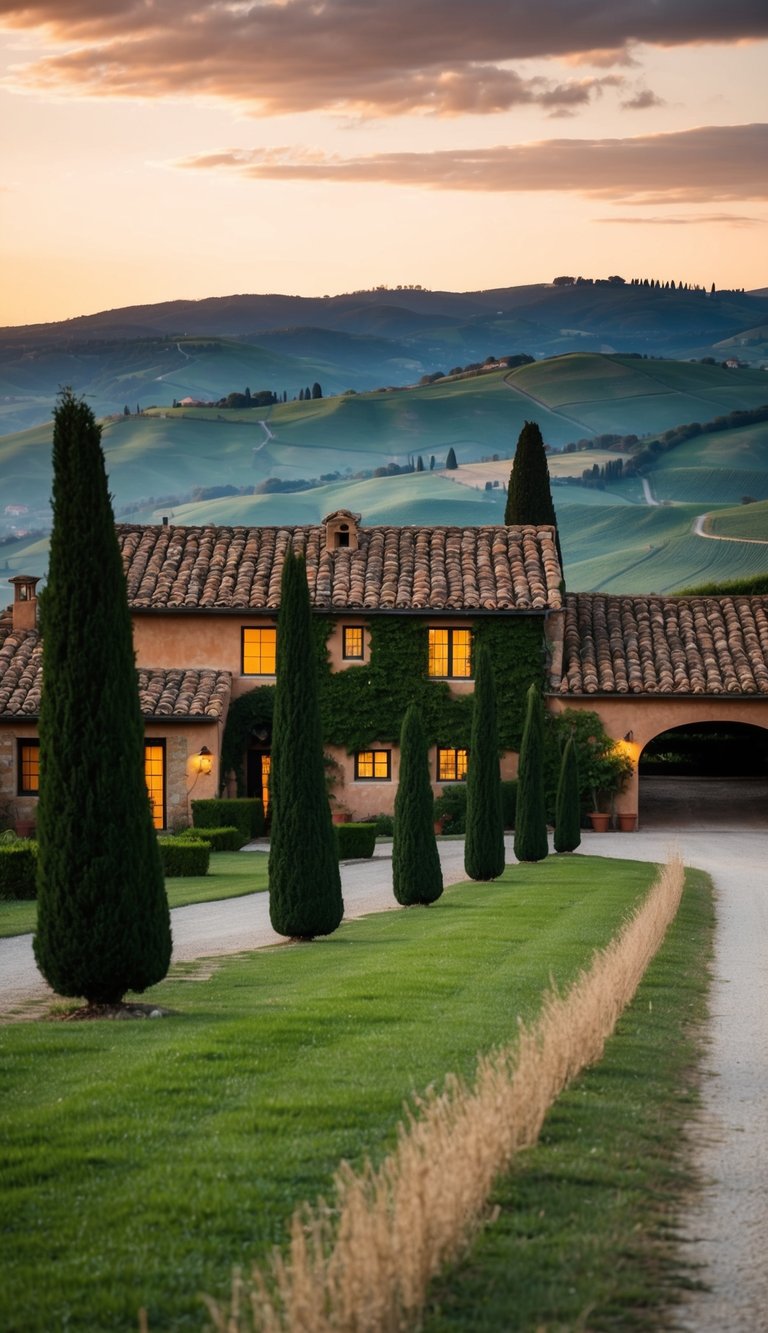
Traditional Tuscan homes feature rough stone walls, terracotta roofs, and wooden shutters, evoking the beauty of the Italian countryside. This architectural style emphasizes harmony with nature, blending well into its surroundings. From vibrant courtyards filled with blooming plants to rustic facades that tell a story, the Tuscan style transforms any house into a tranquil retreat.
Exploring Italian house exteriors reveals how Tuscan elements can enhance both beauty and functionality in dream homes. The combination of exquisite design and practical features makes this style timeless and desirable. Those interested in home design will appreciate the authenticity and simplicity that Tuscan architecture offers, creating a picturesque environment for everyday life.
Stunning Mediterranean Houses with Arches
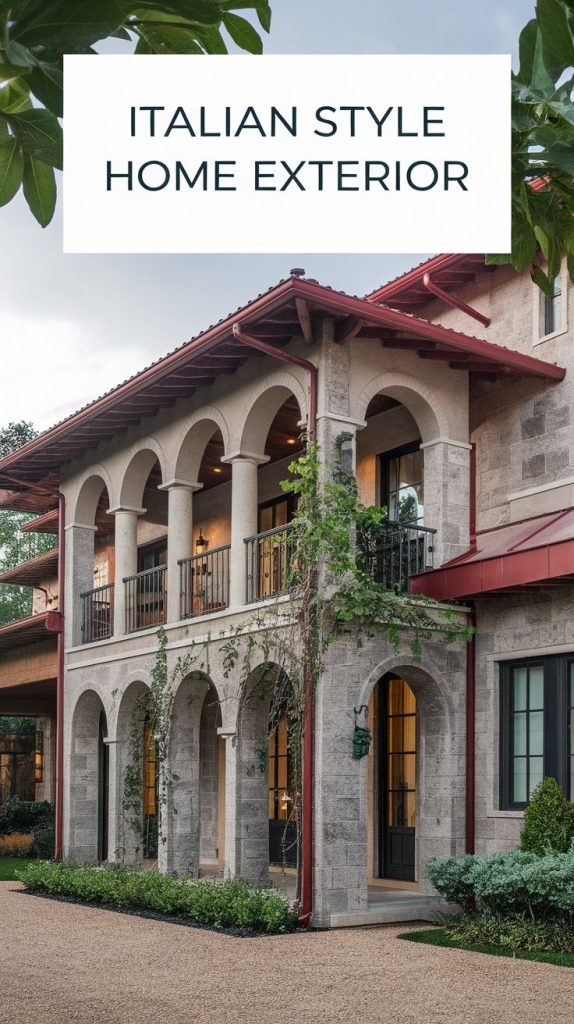
Mediterranean houses are known for their graceful arches. These architectural features add elegance to the exterior of homes.
Arches can be seen in doorways, windows, and patios. They create a soft, inviting look. This design element is common in Tuscan-style homes, which often emphasize natural materials.
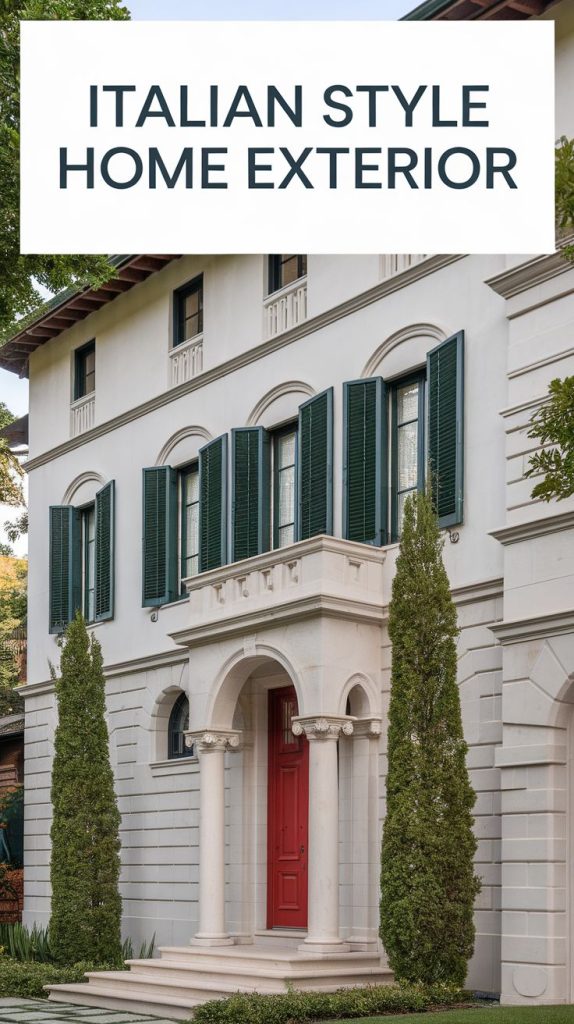
One notable aspect is the use of textured stucco. This finish contrasts beautifully with smooth archways. It creates depth and interest on the facade.
Terracotta tiles are another common feature. These warm-colored roofs complement the arches nicely. They give a timeless feel that is very appealing.
In addition to aesthetics, arches provide spatial benefits. They can create a sense of openness in a room, especially when used in large windows.
Some homes also use arches in outdoor spaces. Arched pergolas and walkways enhance the charm of gardens. This design choice connects the inside of the home with nature.
Many stunning Mediterranean houses feature colorful details. Bright flowers and lush greenery often surround these arches. This vibrant setting highlights the beauty of the architecture.
In summary, arches in Mediterranean houses contribute greatly to their charm. From grand entrances to cozy patios, these features create a welcoming atmosphere.
Italian Residential Architecture
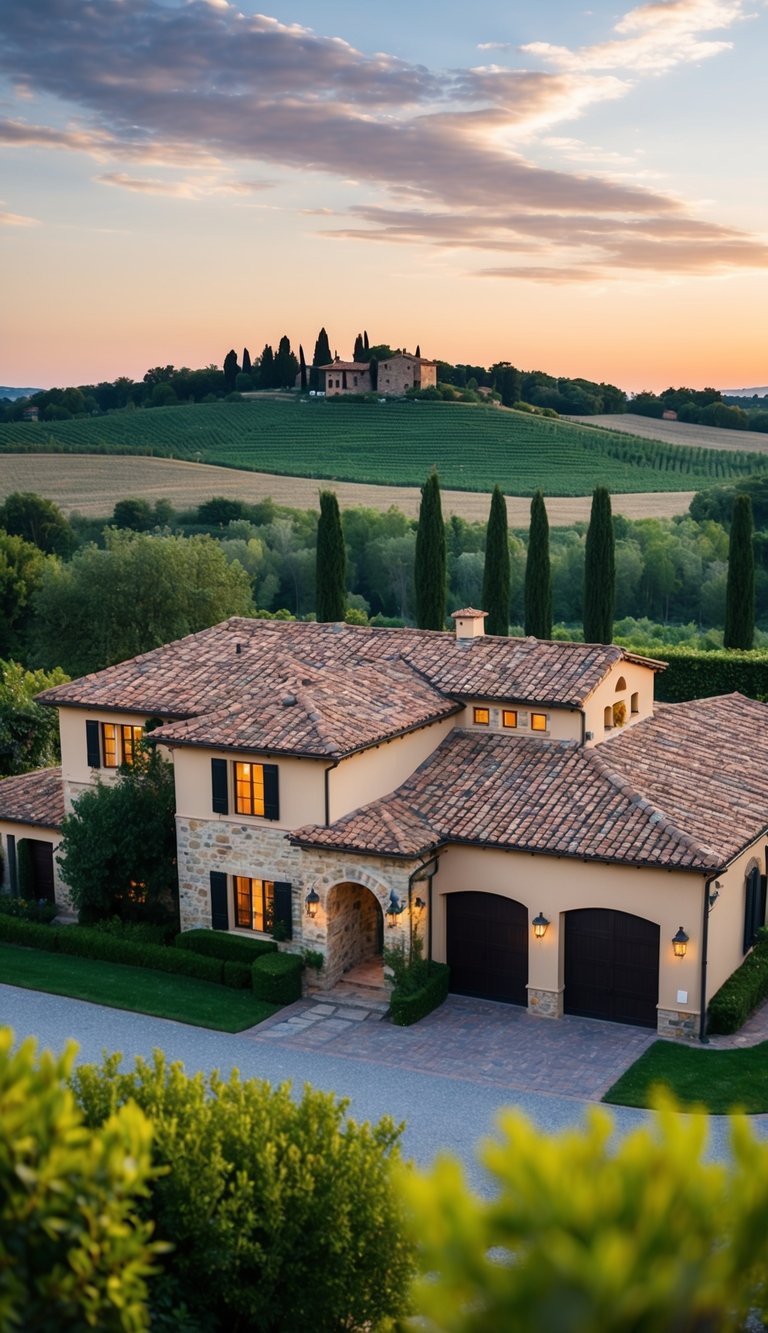
Italian residential architecture is known for its beauty and charm. It combines various regional styles, with each reflecting local traditions and materials.
In Tuscany, homes often feature terracotta roofs and stone facades. These materials help the homes blend in with the picturesque landscapes. The use of warm, earthy colors creates a welcoming atmosphere.
Arched doorways and balconies are common in Tuscan homes. These elements add elegance and invite outdoor living. Wrought-iron railings enhance the classic look.
Popular architectural styles include:
- Tuscan: Characterized by rustic charm and traditional elements.
- Venetian: Known for its intricate detailing and elegant designs.
- Renaissance: Features symmetry and proportion, often with grand facades.
Stone choices play a significant role in achieving the classic look:
- Limestone: Often used for its durability and rustic appearance.
- Marble: Adds a luxurious touch, commonly seen in villas.
Italian architecture emphasizes connection to nature. Gardens are essential, providing beauty and a place for relaxation. Italian homes often incorporate large windows to maximize natural light.
This unique blend of styles and materials makes Italian residential architecture timeless and appealing.
Italian Mediterranean Homes Interior Design Ideas

Italian Mediterranean homes showcase warmth and charm in their interior design. Key elements create a welcoming atmosphere.
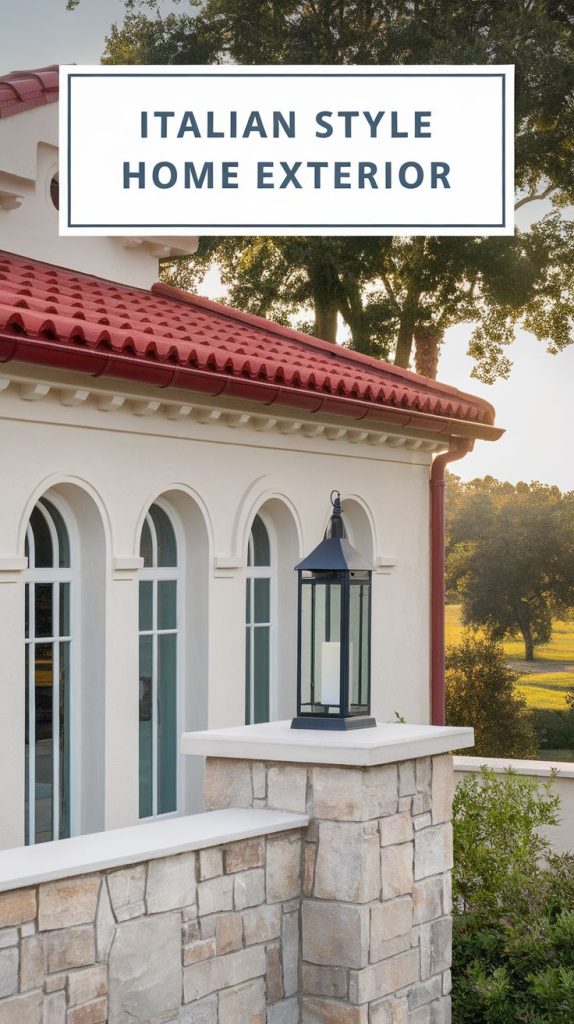
Color Palettes
Soft, earthy tones dominate the interiors. Shades of terracotta, beige, and warm whites harmonize well with rich wooden accents.
Furniture Choices
Furniture is often rustic yet elegant. Opt for pieces made from natural materials like wood and wrought iron. Comfortable sofas and vintage tables enhance the cozy feel.
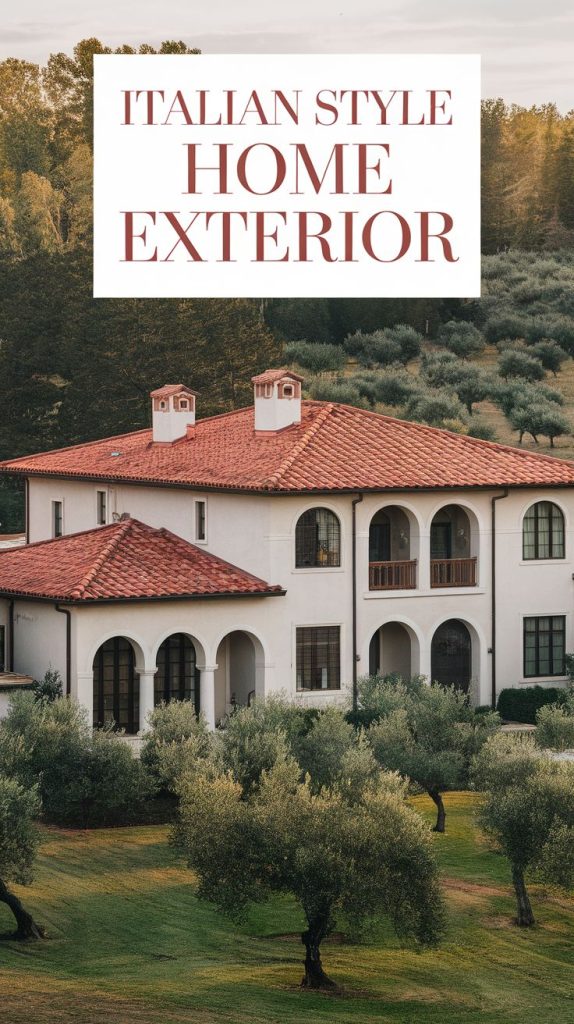
Decorative Elements
Decor plays a crucial role in Italian homes. Elements like ornate mirrors, decorative pottery, and vintage rugs add character. Each piece tells a story and reflects Italian craftsmanship.
Textiles
Soft textiles bring comfort. Use linen or cotton for curtains and cushions. These materials allow light to filter in while providing a fresh, airy vibe.
Lighting
Lighting fixtures should be both functional and stylish. Chandeliers made from wrought iron or delicate glass provide an inviting glow. Wall sconces are also popular to create ambiance.

Outdoor Spaces
Many homes feature seamless transitions between indoors and outdoors. Patios or balconies with lush greenery enhance the Mediterranean vibe. Incorporating a pergola with climbing vines adds visual appeal and shade.
By focusing on these elements, Italian Mediterranean interiors balance elegance and comfort.
Italian Country Cottage Ideas
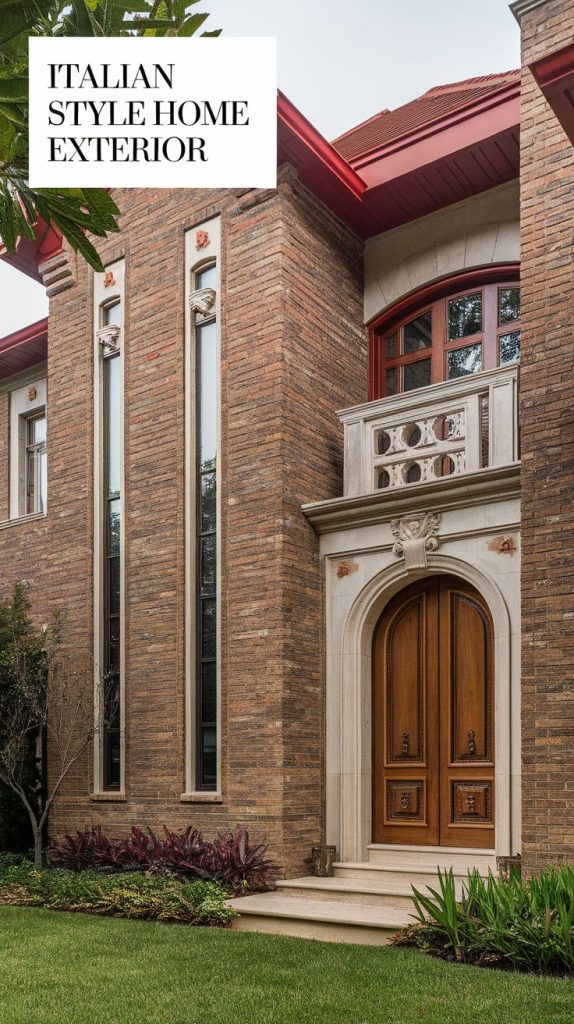
Italian country cottages are known for their charming and rustic appeal. They often feature elements that bring warmth and character to the exterior.
Key Features:
- Stucco Walls: Soft hues like warm yellows and earthy reds are common. These colors blend well with the surrounding landscape.
- Terracotta Roofs: A traditional choice, terracotta tiles add to the authentic Italian look. They provide durability and a rich color.
- Arched Doorways: Many cottages feature elegant arches that invite guests inside. This classic design adds a touch of sophistication.
- Outdoor Living Spaces: Patios and terraces are often designed for outdoor dining and relaxation. They make the most of warm Italian evenings.

Landscaping Elements:
- Cypress Trees: Slim, tall cypress trees create a stunning backdrop. They are often planted along pathways or near entrances.
- Vibrant Gardens: Flower beds filled with lavender, rosemary, and sunflowers enhance the cottage’s charm. They provide color and fragrance.
Decorative Touches:
- Wrought Iron: Railings and gates made from wrought iron add elegance. This material is durable and fits the rustic aesthetic.
- Hand-Painted Tiles: Decorative tiles can be used for accents on facades or walkways. They bring a personal touch to the design.
These elements together create inviting and picturesque Italian country cottages, perfect for those seeking a slice of rustic charm.
Italian Inspired Interior Design
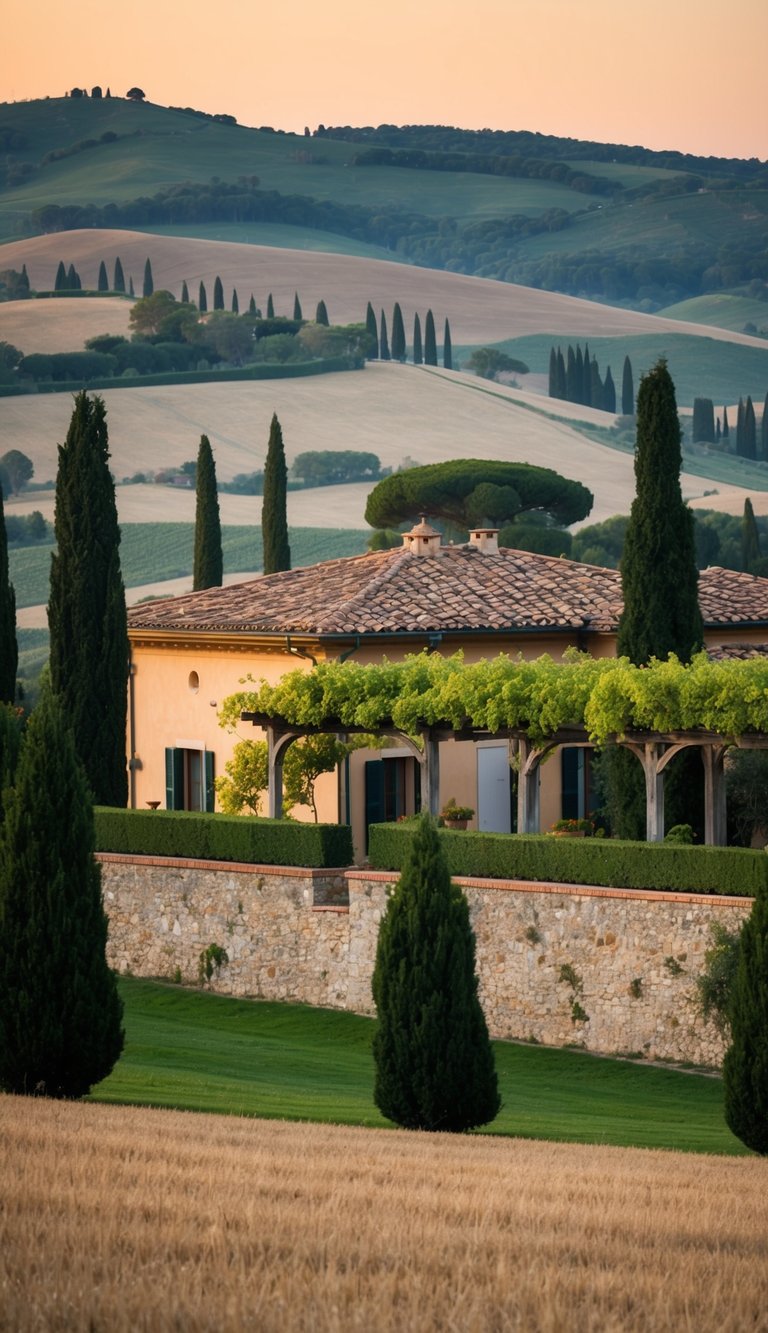
Italian inspired interior design captures the charm and elegance of Tuscany. This style is known for its warm colors, rustic materials, and inviting layouts.
Key elements include:
- Natural Stone: Using natural stone for flooring or walls adds a rustic and timeless touch.
- Exposed Wooden Beams: These beams accentuate the ceiling and create an inviting ambiance.
- Rich Fabrics: Fabrics in warm, earthy tones like terracotta and deep reds enhance comfort.
Decorative features are also vital:
- Ornate Mirrors: These can serve as focal points and add depth to a room.
- Decorative Pottery: Handmade pottery brings a unique and personal touch to the space.
- Vintage Rugs: They provide warmth and texture while adding color and pattern.
Furniture choices often reflect a blend of comfort and style. Spacious, comfortable sofas and large dining tables bring people together.
The combination of these aspects helps create a cozy, inviting atmosphere. This is the essence of Italian inspired interior design that many strive to achieve in their homes.
Tuscany’s spirit is brought indoors through thoughtful design, making any space feel warm and welcoming.
Italian Villa Exterior Tuscan Style
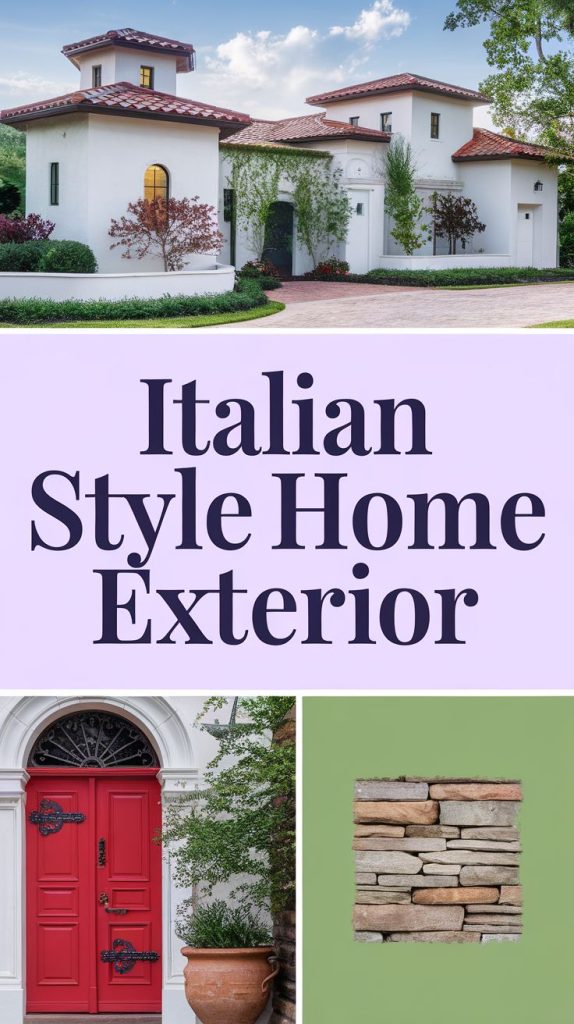
Italian villas in the Tuscan style are known for their warm, inviting appearance. They often feature materials like stucco and natural stone, which contribute to their rustic charm.
Key Characteristics:
- Roofing: Dark terracotta tiles are common. They provide a classic look and help with temperature control.
- Windows: Arched windows are a signature of Tuscan design. These large windows not only allow for natural light but also enhance aesthetic appeal.
- Colors: Earthy tones dominate. Hues of soft yellows, warm browns, and light terracotta paint the exteriors.
- Details: Rich brown wooden shutters often adorn the windows. This adds character and a touch of elegance.
Landscaping Elements:
Italian villas typically feature:
- Stone Pathways: Winding stone paths lead to entrances, providing a rustic feel.
- Potted Plants: Olive trees and flowering shrubs add greenery and life to the surroundings.
- Outdoor Spaces: Many villas include patios or terraces for relaxation, enhancing outdoor living.
Tuscan-style homes combine beauty and functionality, creating a peaceful environment reminiscent of the Italian countryside. The design reflects a lifestyle that embraces nature and tradition, making these villas timeless.
Italian Style House Exterior Ideas

Italian house exteriors often showcase beauty and charm. They blend rustic elements with elegant design. Here are some key ideas for creating an Italian-style exterior.
1. Warm Color Palettes
Many Italian homes feature warm hues. Earthy tones like terracotta, golden yellows, and soft browns create an inviting look. These colors reflect the landscapes of Italy.
2. Natural Materials
Using natural materials is essential. Stone walls and clay roofs add authenticity. These materials not only look great but also age beautifully.
3. Arched Doorways and Windows
Arched designs are a hallmark of Italian architecture. Curved doorways and windows soften the look and enhance elegance. They invite the eye and create an airy feel.
4. Terracotta Tiles
Terracotta roof tiles give a timeless appearance. They help in maintaining a classic look that is associated with Mediterranean style. Their durability ensures long-lasting beauty.
5. Outdoor Living Spaces
Italian homes often include outdoor areas. Patios and courtyards promote relaxation and socializing. Adding lush greenery and comfortable furniture enhances these spaces.
6. Decorative Elements
Incorporating decorative features like wrought iron railings and tiled accents adds character. These details reflect the rich cultural heritage of Italy.
These elements combine to create stunning Italian-style house exteriors that capture the essence of Mediterranean living. For more inspiration, explore classic Tuscan house designs.
Italian Mediterranean Homes
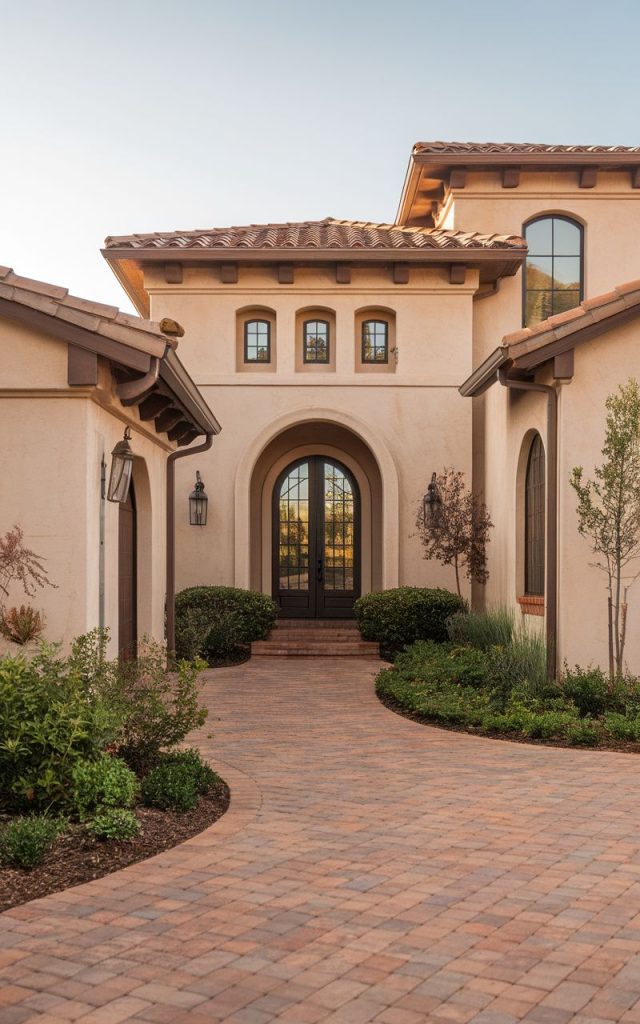
Italian Mediterranean homes are known for their warm and inviting designs. They often feature elements that reflect the natural beauty of Italy’s landscape.
Key Characteristics:
- Materials: These homes typically use materials like stone, stucco, and tile. This combination creates a rustic and timeless appearance.
- Roofs: The signature red-tiled roofs add a distinctive charm, enhancing the home’s Mediterranean style.
- Arched Doorways: Decorative arches are commonly used for doorways and windows, providing an elegant touch.
- Outdoor Spaces: Patios and terraces are important in Mediterranean homes, encouraging outdoor living.
Common Colors:
- Earthy tones, such as beige, terracotta, and olive green, are popular. These colors blend well with the natural surroundings.
Landscaping:
- Mediterranean gardens often feature lush greenery, herbs, and flowering plants.
- Potted plants and trees, such as olive or citrus, are common additions for aesthetic appeal.
Many homeowners are inspired by Mediterranean architecture to create their dream homes. They appreciate the blend of beauty and functionality seen in these designs. For more inspiration, explore stunning examples of Tuscan Mediterranean houses here.
Italian House Exterior Tuscan Style Dream Homes

Tuscan-style homes are known for their rustic charm and warm colors. They often feature natural materials that blend with the surrounding landscape.
Key Features of Tuscan Homes:
- Stone Facades: Rough stone walls create a traditional look. These surfaces age beautifully over time.
- Terracotta Roofs: Clay tiles add to the home’s warmth and authenticity.
- Wooden Shutters: Often painted in earthy tones, these functional elements enhance the exterior.
Tuscan homes usually have outdoor spaces that invite relaxation. Patios and gardens often showcase vibrant Mediterranean plants.
Popular Color Schemes:
- Earthy browns
- Warm ochres
- Soft olives
- Deep greens
These colors help the homes blend into the Italian countryside.
Stylish Details:
Tuscan homes often include arched doorways and windows. These elements add architectural interest while letting in plenty of natural light.
Additionally, many homes incorporate wrought iron accents. This detail can include railings, light fixtures, and decorative gates.
Spaces around Tuscan-style homes are designed to be welcoming. They often feature cozy seating areas, perfect for enjoying the outdoors while sipping a glass of wine.
For more inspiring ideas, visit this Pinterest board showcasing stunning Tuscan styles.
Mediterranean Home Plans for Every Style

Mediterranean home plans offer a variety of designs to suit different tastes. These homes draw inspiration from Italian, Spanish, and Moorish architecture.
Key Features:
- Stucco Exteriors: Smooth, textured finishes create a warm, inviting look.
- Tile Roofs: Low-pitched red tiles provide both style and practical benefits.
- Arched Windows: Large, imposing windows allow natural light into living spaces.
Home styles can vary significantly within this genre. Options include:
- Villa Style: Often single-story, these homes emphasize open spaces and gardens.
- Luxury Estates: These expansive designs come with multiple bedrooms and baths.
- Rustic Cottages: Smaller homes that maintain cozy charm while using traditional materials.
Many Mediterranean plans also incorporate outdoor living areas. Patios, balconies, and loggias create perfect spaces for relaxation.
Considerations:
- Climate: Homes are often designed for warm climates, maximizing ventilation.
- Functionality: Many plans focus on easy flow between indoor and outdoor spaces.
Anyone interested can explore various Mediterranean house plans. Each plan offers something unique while staying true to the Mediterranean style.
Italian Style Home Exterior
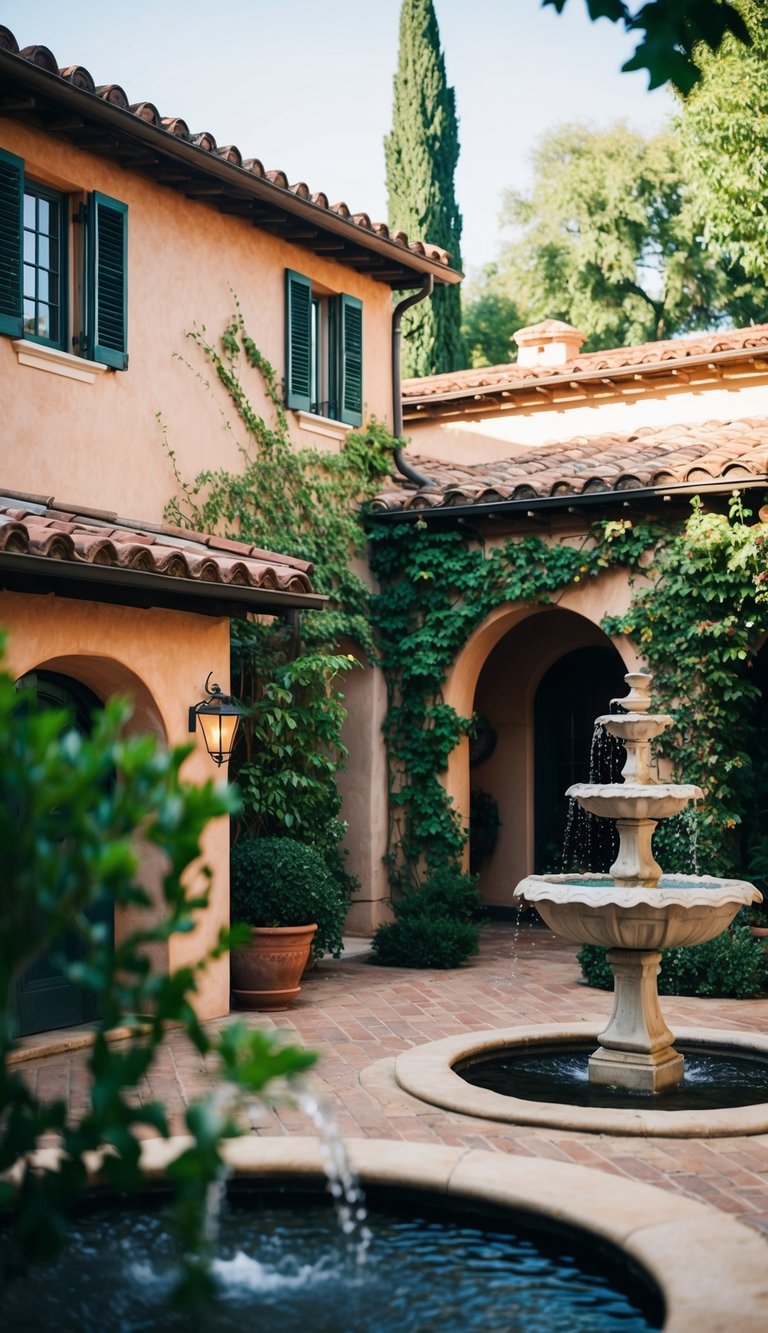
Italian style home exteriors are known for their warm, inviting designs. They often feature a combination of rustic and elegant elements.
Key Features of Italian Exteriors:
- Materials: Common materials include stone, stucco, and clay tiles. These materials are durable and enhance the authentic look of the home.
- Roofing: Many Italian homes have sloped roofs with terracotta tiles. This design helps with rain drainage and adds character.
- Color Palette: Colors are usually sun-washed, with earthy tones like warm beige, soft terracotta, and muted greens.
Windows and Doors:
- Shutters: Traditional wooden shutters are popular, often painted in deep greens or Mediterranean blues. They add charm and functionality.
- Arches: Rounded arches are commonly seen in window and door designs, creating a classic Italian aesthetic.
Landscaping:
- Outdoor Spaces: Gardens and patios are important and often feature Mediterranean plants like olive trees and lavender.
- Pergolas: Many homes include pergolas that provide shade and elegance, making outdoor areas more inviting.
These design elements work together to capture the essence of Italian architecture. The result is a home that feels both timeless and welcoming. For more inspiration, visit 50+ Italian Home Exteriors So Charming.
Mediterranean Style Homes
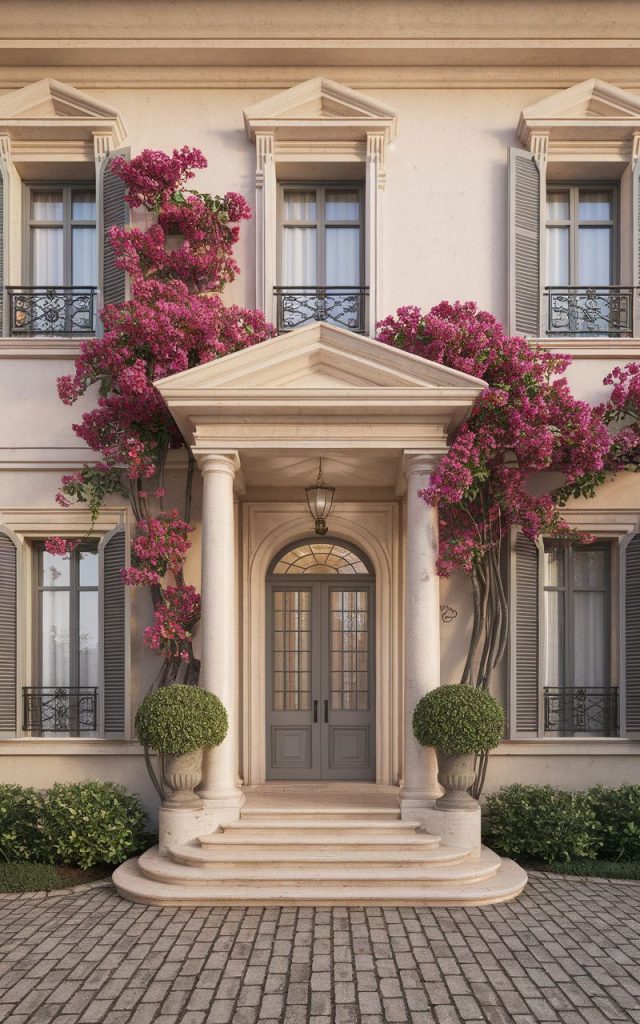
Mediterranean style homes draw inspiration from the sunny regions of Southern Europe, particularly Italy and Spain. They often feature stucco exteriors, red-tiled roofs, and arched doorways.
Key characteristics include:
- Earthy Color Palettes: Warm tones like ochre, terracotta, and beige are common.
- Outdoor Living Spaces: Patios and balconies encourage outdoor relaxation.
- Decorative Details: Wrought iron railings and colorful tiles add charm.
These homes embrace a casual elegance. The use of natural materials brings them closer to nature. Stone and wood elements contribute to their rustic look.
Many Mediterranean homes also incorporate lush gardens and courtyards. These features provide privacy and a serene atmosphere.
Windows are often large and strategically placed to let in light. They may have shutters or decorative awnings for added style.
Examples of Mediterranean homes can be found in various styles, including:
| Style | Description |
|---|---|
| Tuscan | Known for its earthy tones and stone finishes. |
| Spanish Revival | Features ornate details and vibrant colors. |
| Coastal Mediterranean | Combines traditional elements with beachy vibes. |
This architectural style remains popular due to its timeless appeal and connection to relaxed, sunny living. It invites homeowners to enjoy a lifestyle filled with beauty and comfort.
Italian Mediterranean Homes Interior
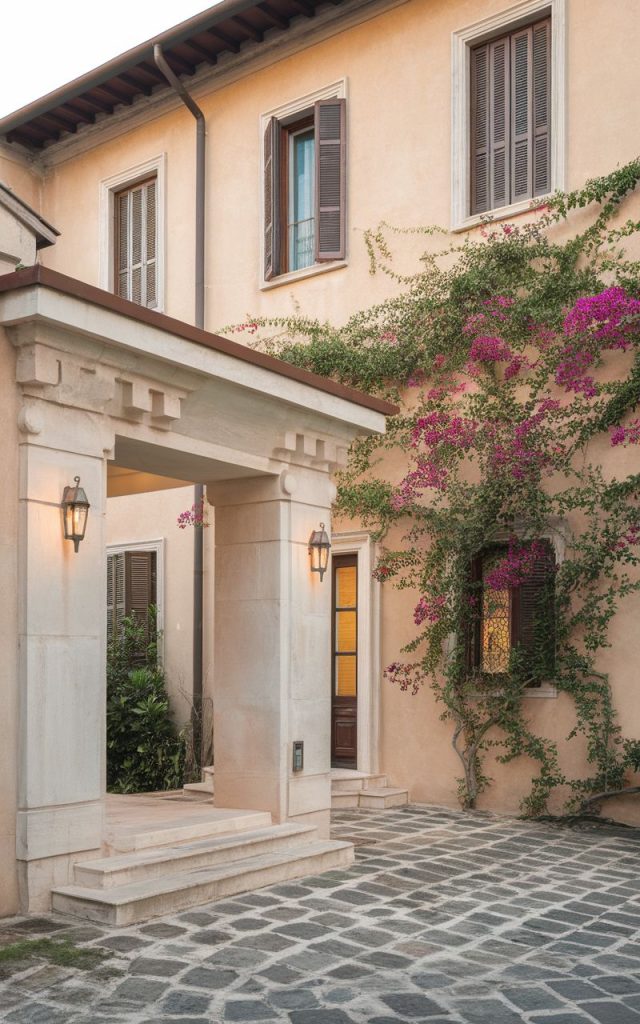
Italian Mediterranean homes are known for their warm and inviting interiors. The rooms often feature earthy tones and natural materials that reflect the beauty of the Italian landscape.
Key Elements:
- Terracotta Tiles: These are common for flooring. They add warmth and texture to spaces.
- Wood Beams: Exposed wooden beams on ceilings create a rustic charm. They enhance the overall feel of the home.
- Color Palette: Soft yellows, muted reds, and olive greens are popular. These colors mimic the outdoor scenery of the Mediterranean.
Furniture and Decor:
- Traditional Furniture: Pieces often made of dark wood, featuring intricate carvings, contribute to a classic look. Comfortable upholstered sofas and chairs enhance relaxation.
- Artwork: Mediterranean-style homes may showcase local art or landscapes. Vibrant paintings can enliven a room and showcase culture.
- Textiles: Fabrics such as linen and cotton are frequently used for curtains and cushions. Rich textures add comfort and elegance.
Lighting:
Natural light is essential in these homes. Large windows and open spaces allow sunlight to fill the rooms, creating a cheerful ambience.
Incorporating these design aspects helps create an inviting and timeless atmosphere in Italian Mediterranean homes.
Unique Mediterranean Homes Exterior Designs To Inspire You
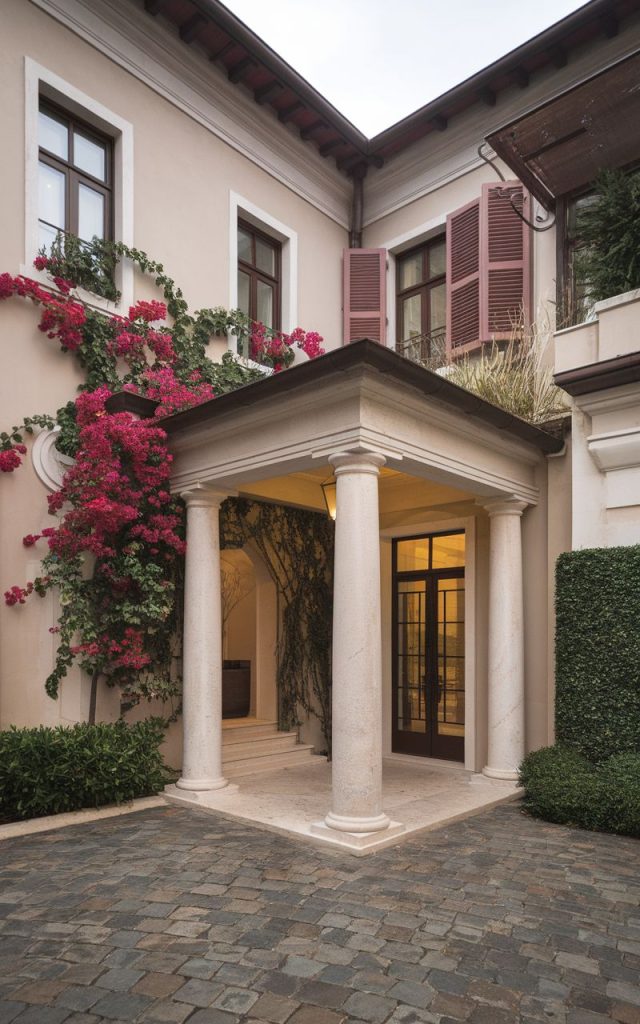
Mediterranean homes are recognized for their charm and character. They often feature warm colors, natural materials, and intricate designs. Here are some inspiring elements of Mediterranean exteriors.
Stucco Walls
These walls are a hallmark of Mediterranean style. They come in earthy tones that blend well with nature. Stucco also provides excellent insulation.
Terracotta Roofs
The distinct terracotta tiles add a rustic feel. Their reddish hue stands out against blue skies. This style is functional as well, as it helps with water drainage.
Arched Windows and Doorways
Arches contribute to the elegance of Mediterranean homes. They create a welcoming look while allowing plenty of natural light.
Balconies and Patios
Outdoor spaces are crucial in Mediterranean design. Balconies with wrought-iron railings and spacious patios encourage outdoor living, ideal for warm climates.
Landscaping
Landscaping plays a key role. Lush gardens with olive trees, lavender, and bougainvillea enhance the aesthetic. This greenery complements the natural materials used in the home.
Color Palette
The color scheme often includes earthy and vibrant shades. Think of terracotta, olive green, and sunny yellows, which evoke a warm Mediterranean vibe.
These design elements create distinctive Mediterranean homes that stand out and inspire a connection with nature. For more ideas, check out 23 Unique Mediterranean Homes Exterior Designs to Inspire You.
Tuscan Design Principles

Tuscan design principles focus on blending Mediterranean charm with Old World influences. The style is characterized by rustic elements that create a warm and inviting atmosphere, reflecting the beauty of the Italian countryside.
Mediterranean Origins
Tuscan design originates from the Mediterranean region, specifically from the Italian countryside. This style features elements that echo the natural landscapes, such as earthy colors and natural materials.
Common color palettes include terracotta, olive green, and warm browns, inspired by the region’s soil and vegetation. Homes often incorporate stone and stucco exteriors, which help the structure harmonize with the surroundings.
These materials are durable and provide a timeless feel, making them ideal for both modern and traditional interpretations of Tuscan architecture.
Old World Influences
The Old World influences within Tuscan design include a blend of historical styles that reflect Italy’s rich cultural heritage. Elements such as arched doorways, wrought-iron accents, and wooden beams are widely used.
These features, often handcrafted, add uniqueness to each home. Ornate details, like decorative tiles and intricate cornices, enhance the visual interest.
This style often emphasizes craftsmanship, showcasing the skill of local artisans. The result is an elegant yet functional living space that invites comfort and relaxation.
Rustic Elegance Defined
Rustic elegance in Tuscan design highlights a balance between beauty and simplicity. This approach focuses on natural textures and warm tones, creating a cozy and welcoming environment.
Features like exposed beams, stone walls, and handcrafted furniture characterize this style. Attention to detail is crucial, with many homes showcasing unique designs that reflect the owner’s personality.
Outdoor living spaces also play a significant role, incorporating terraces and gardens that connect the home to its surrounding landscape. This connection fosters a warm, inviting atmosphere that celebrates the beauty of rustic Tuscan charm.
Architectural Features

Tuscan-style homes are known for their connection to nature and rustic sophistication. Key architectural features include terracotta roof tiles, stucco exterior walls, stone accents, and arched windows and doors.
Terracotta Roof Tiles
Terracotta roof tiles are a hallmark of Tuscan architecture. These tiles are made from clay and have a warm, earthy color that blends well with the surrounding landscape. They provide excellent durability and weather resistance, making them suitable for various climates.
The distinctive shape of these tiles is often semi-cylindrical, which aids in effective rain runoff. This design not only enhances the functionality of the roof but also contributes to the classic aesthetic that characterizes these beautiful homes. Overall, terracotta roofs evoke an inviting, Mediterranean feel that complements the entire structure.
Stucco Exterior Walls
Stucco is a prevalent choice for exterior walls in Tuscan homes. This material consists of cement, sand, and lime, creating a textured surface that is both attractive and durable. The warm earth tones of stucco give these homes a cozy and classic appearance.
Stucco is also ideal for insulation, helping to keep interiors comfortable in varying temperatures. Many Tuscan-style homes incorporate decorative elements in the stucco finish, enhancing their visual appeal. The smooth finish can highlight archways and other architectural details, contributing to the home’s elegant look.
Stone Accents and Facades
Stone accents and facades play a significant role in Tuscan architecture. Whether it’s rough-cut stone or polished finishes, these materials add character and depth to the home’s exterior. They often frame entryways or garden areas, drawing the eye and creating focal points.
Stone is not just decorative; it offers durability and resistance to the elements. Depending on the style, stone can range from rustic to refined, allowing for a variety of designs. These features create a harmonious blend with natural landscapes, reinforcing the connection to rural Italian heritage.
Arched Windows and Doors
Arched windows and doors are iconic elements of Tuscan-style architecture. This design choice not only enhances the beauty of the home but also allows for increased natural light, making interiors feel more spacious.
The curves of arched openings provide a softer look compared to traditional rectangular shapes. Many Tuscan homes feature wooden doors with intricate carvings, adding an artisanal touch to the design. These features often extend to balconies and patios, encouraging a seamless flow between indoor and outdoor living spaces.
Exterior Decor and Landscaping
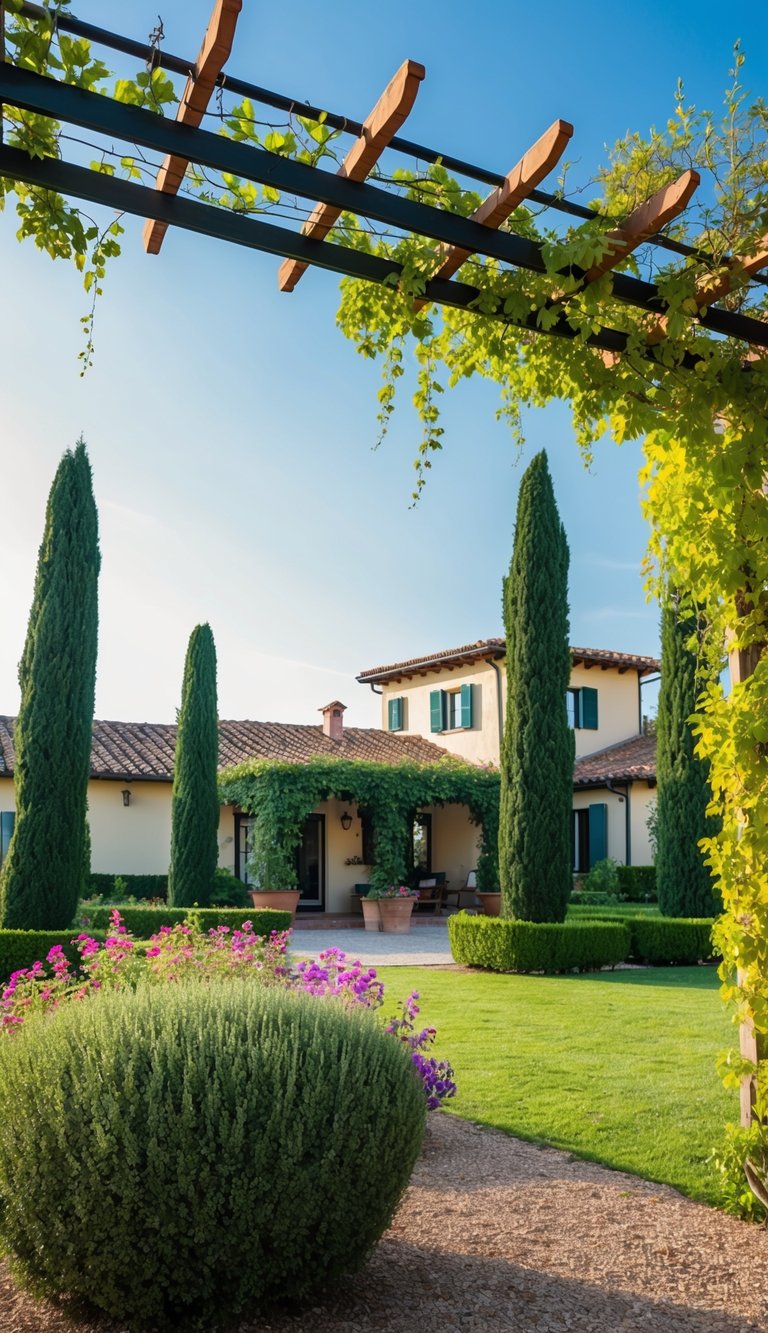
The right exterior decor and landscaping can elevate a Tuscan-style home, enhancing its charm and inviting beauty. Key elements, such as outdoor living spaces, lush greenery, and wrought iron details, play a vital role in creating a cohesive and appealing environment.
Outdoor Living Spaces
Outdoor living areas are essential in Tuscan-style homes. They often feature spacious patios or terraces designed for relaxation and entertainment. Popular materials include natural stone or terracotta tiles, adding a rustic touch.
Incorporating comfortable seating, such as wrought iron chairs and cushioned lounges, encourages enjoyment of the surroundings. Fire pits or outdoor fireplaces create warmth and ambiance, perfect for gatherings.
Adding shade structures, like pergolas adorned with climbing plants, enhances comfort and aesthetics. These spaces serve as extensions of the home, blurring the lines between indoor and outdoor living.
Lush Greenery and Fountains
Lush greenery forms an important part of the Tuscan exterior. Homeowners often choose flowering plants, such as lavender and bougainvillea, for vibrant colors and pleasant scents.
Incorporating fragrant herbs contributes to both beauty and practicality, allowing fresh flavors for cooking. To add further charm, garden paths lined with rosemary or thyme create a delightful sensory experience.
Fountains are a classic element, often crafted from stone. A wall-mounted fountain adds a serene touch, providing gentle sounds of flowing water. These features enhance relaxation and an inviting atmosphere.
Wrought Iron Details
Wrought iron details are integral to Tuscan-style homes. Features like balconies, gates, and railings combine security with elegance.
Ornately designed wrought iron adds character and a touch of artistry. While functional, each piece serves as a decorative element enhancing the home’s facade.
Incorporating these metal accents can soften the overall look. They often contrast beautifully with the earthy tones of stucco walls, further enriching the home’s aesthetic.
Material Selection
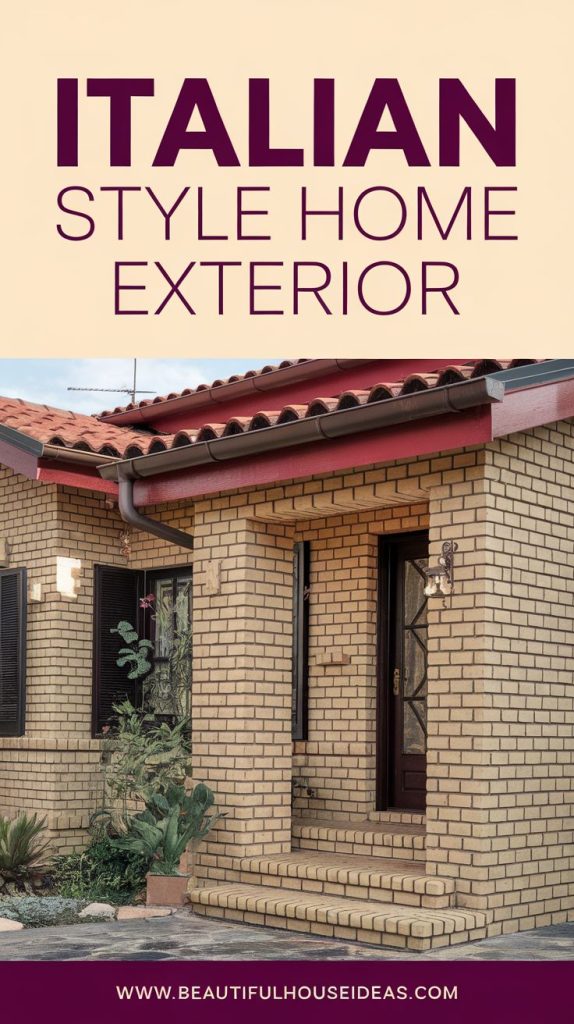
Choosing the right materials is essential in creating authentic Tuscan-style homes. Two main categories play a significant role: terracotta and stone, along with natural wood and marble. These materials reflect the warmth and elegance of the Italian countryside.
Terracotta and Stone
Terracotta roofs are a hallmark of Tuscan architecture. Their warm earth tones complement the natural beauty of the surroundings. The tiles are durable and provide excellent insulation, keeping homes cool in summer and warm in winter.
Stone walls are another key feature. They are typically made from local materials like limestone, adding character and authenticity. Stone provides strength and weather resistance, creating a timeless look. The texture of stone walls also adds depth and interest to the exterior.
Natural Wood and Marble
Natural wood plays a crucial role in Tuscan homes, especially with wooden beams. These beams can be both functional and decorative, adding a rustic touch. Woods like oak and chestnut are common, offering warmth and a rich feel to interiors.
Marble is often used for accents such as window sills and thresholds. Its elegant appearance enhances the overall aesthetic. Using light-colored marble can brighten spaces, while darker shades can add contrast and depth. These materials work in harmony to create inviting and sophisticated homes.
Design Inspirations

Italian home design offers a blend of rustic charm and elegance that draws inspiration from the rich history and beauty of Italy. These homes capture the essence of the Italian countryside, featuring elements that evoke warmth and comfort while also showcasing sophisticated style.
Tuscan Villas and Countryside
Tuscan villas are known for their stunning stone façades and terracotta roofs. These features provide a rustic charm that is both inviting and timeless. The use of natural materials like wood and stone reinforces the connection to the picturesque countryside.
Outdoor spaces often include courtyards adorned with lush greenery and flowering plants, creating a serene escape. Large archways and wrought iron details add character and elegance, while arched windows enhance natural light. Such elements contribute to a cozy yet sophisticated atmosphere that feels distinctly Italian.
Elegant Venetian Elements
Venetian design brings sophistication and luxury to Italian homes. This style often features ornate details and a rich color palette, including deep reds, golds, and greens. Venetian homes frequently have elaborate balconies overlooking serene canals or elegant gardens.
Artistic touches like frescoes and decorative tiles infuse personality into living spaces. Using elegant chandeliers and rich fabrics creates a cozy yet refined interior. These features remind one of the vibrant culture and history found in Venice.
Contemporary Rustic Mix
The contemporary rustic mix combines traditional Tuscan elements with modern design. This approach allows for open layouts, large windows, and sleek finishes, providing a fresh perspective on Italian architecture.
Combining rustic stone walls and wooden beams with modern appliances enhances functionality while maintaining charm. Neutral color palettes create a calm environment, making spaces feel spacious and inviting. This blend results in homes that honor the past while embracing the present, providing the best of both worlds.
Through these design inspirations, Italian homes invite a sense of Mediterranean magic into everyday living.
Customization and Personal Touches
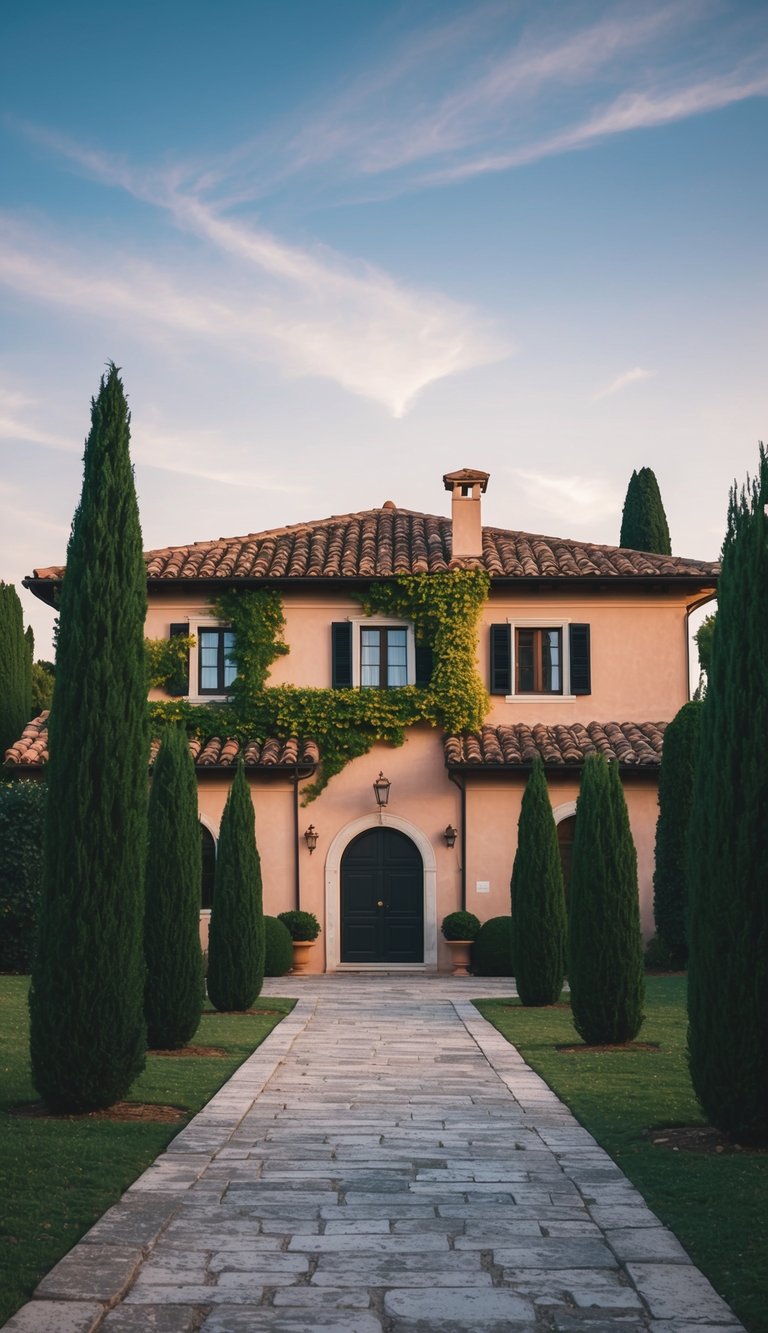
Creating a Tuscan-style home allows for a blend of traditional elements with personal flair. Custom features can enhance charm and offer a unique style tailored to individual preferences.
Custom Home Elements
A custom home benefits from various design elements that reflect the homeowner’s taste. Using earthy colors such as rich browns, warm terracotta, and soft beige enhances the rustic feel. Stone facades and wooden beams can create a sturdy, inviting exterior.
Roofing materials are also important. Traditional clay tiles provide a classic Tuscan look and durability. Homeowners might choose to incorporate large windows that invite natural light and views of the landscape. Outdoor spaces, like patios or balconies, are perfect for enjoying the Italian sun.
Unique Tuscan Details
Unique details play a crucial role in defining a Tuscan home. Arched doorways and windows add elegance, while wrought iron accents can elevate the charm of a villa.
Terracotta flooring is a popular choice, offering warmth and authenticity to the interior. Personal touches like handcrafted tiles or vintage furniture can contribute to an inviting atmosphere. Additionally, incorporating Mediterranean plants in landscaping can enhance the beauty of the property, offering a lush, vibrant feel.
Every custom selection adds to the overall charm, contributing to an inviting Italian living experience.
Practical Aspects of Tuscan Design
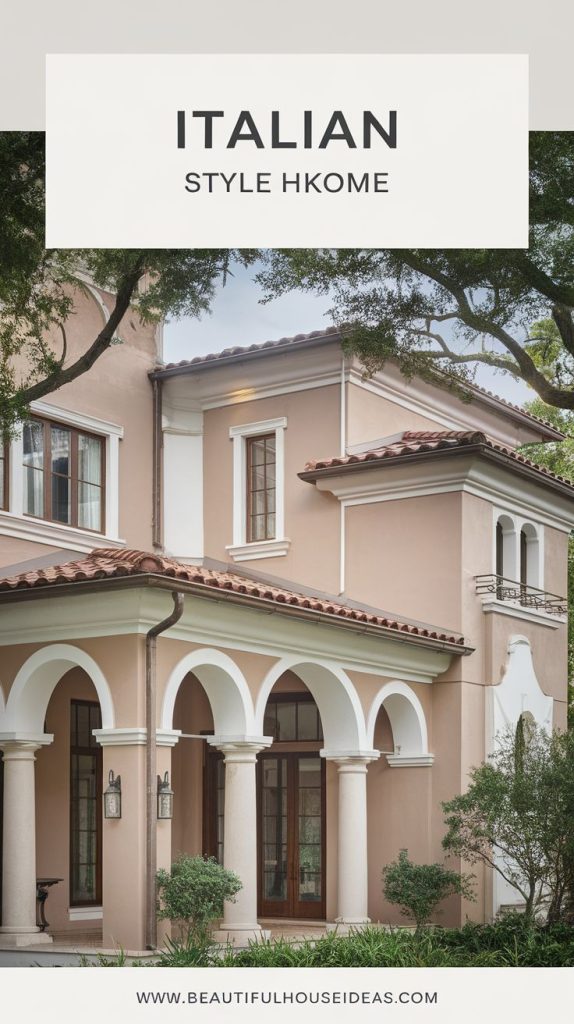
Tuscan design not only focuses on beauty but also on practical features that enhance the living experience. Key factors include climate adaptation, sustainability, and easy maintenance. These elements ensure that the homes offer comfort while being aesthetically pleasing.
Climate Considerations
Tuscan homes are designed to withstand various climate conditions, particularly warmth. The sun-kissed stucco walls are an excellent choice as they reflect sunlight, keeping interiors cooler. The walls’ thick structure also provides insulation against heat, making the house comfortable during hot summers.
Charming terracotta roofs are another feature that aids in temperature control. These roofs stay cool under the sun and help regulate indoor temperatures. Additionally, gabled roof designs often allow for natural airflow, further enhancing cooling.
Sustainable Features
Sustainability is an important aspect of modern Tuscan homes. They often incorporate local materials for construction, reducing the carbon footprint. Using natural stucco and reclaimed wood not only supports local economies but also adds a warm, rustic feel.
Many homes feature energy-efficient windows that minimize heat loss in winter and prevent overheating in summer. Outdoor living spaces are designed to maximize natural light, reducing the need for artificial lighting. These features help create a home that is both eco-friendly and cost-effective.
Maintenance and Upkeep
Keeping a Tuscan home in good shape requires some attention but is manageable. The smooth stucco exterior is relatively low-maintenance; it only needs occasional washing to remove dirt and grime. Regular inspections for cracks or damage help preserve its charm over time.
The terracotta roof, while durable, may require periodic cleaning to prevent moss growth, especially in humid climates. Regular maintenance ensures not only the longevity of the materials but also the safety and comfort of the inhabitants.
By focusing on these practical aspects, Tuscan design creates homes that are as functional as they are beautiful.
